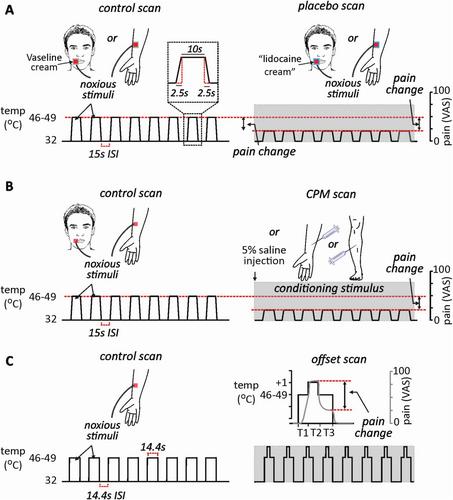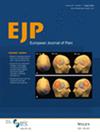Conditioned Pain Modulation, Placebo and Offset Analgesia: Rates of Behavioural Expression of Inhibitory, Nonresponse and Facilitatory Pain Modulatory Effects
Abstract
Background
The brain is capable of powerfully inhibiting perceived pain intensity. Experimentally, three pain modulating phenomena have been well explored: placebo analgesia (PA), offset analgesia (OA) and conditioned pain modulation (CPM). While all three can reduce pain intensity, these paradigms are not often compared behaviourally, nor are their potentially common psychological or physiological mechanisms considered.
Methods
Here, we present retrospective behavioural pain rating, psychological and demographic data in 273 pain-free control participants who underwent either PA (n = 100), OA (n = 37) or CPM (n = 136). Significant changes in pain intensities were assessed using permutation testing to derive cohorts where pain was significantly inhibited (inhibitory responders), unchanged (nonresponder) or increased (facilitatory responder) during the expression of each phenomenon. Psychological questionnaire scores, demography and pain perception variability were compared between response cohorts to all three phenomena.
Results
We identified largely similar proportions of individuals categorised as either inhibitory responders, nonresponders or facilitatory responders to each of PA, OA and CPM—with no sex differences identified in any phenomena nor response category. Dispositional optimism and calibrated noxious temperature demonstrated a significant effect in PA and CPM responses, respectively—with inhibitory responders recording higher scores than facilitatory responders in PA, and inhibitory responders possessing lower thermal sensitivity to nonresponders in CPM.
Conclusion
A shared mechanism was identified between PA and OA, such that perceived pain variability to repeated identical noxious stimuli related to both phenomena's expression. This warrants further investigation given the suggested neural circuit differences between these two phenomena, and only PA is presently linked with Bayesian theorem.
Significance Statement
Humans are capable of inhibiting their own pain in several ways; however, the brain systems driving these analgesic mechanisms are complex and are known to diverge despite producing similar outcomes. Here we show core behavioural similarities between different forms of endogenous analgesic phenomena, with differences in psychological and physiological correlates.


 求助内容:
求助内容: 应助结果提醒方式:
应助结果提醒方式:


